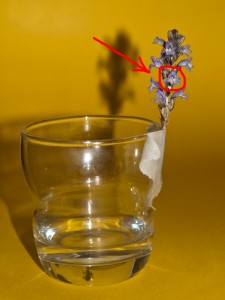Focus stacking – How to get more depth of field
Hi,
today I’d like to write some quick words about my new playing around (it’s late already).
After I started a few weeks ago with macro photography, I realized quickly that there is a big disadvantage. The depth of field is very small. I like to go to the maximum magnification factor I can get out of my 35mm macro lens (which is 1:1). As bigger as better :) But in this case the depth of field is below 1 mm (approx).
But what is the depth of field? It is the area on the photo with is sharp. It doesn’t really matter for landscape pictures, because here is mostly everything sharp. More already it matters at portrait photography. But here is it ‘just’ a technique for pictorial designing and wanted.
At the macro photography is the camera not “asking” anymore if we would like to have some sharp and blurry areas. It is just like it is. Sure, we can use a smaller aperture (is this correct in English?… damn… hard to write gobbledygook in English… sorry) till it’s dark… doesn’t really help. Ok, in compare to the highest aperture is it a difference, but still not a lot.
And here we come to focus stacking. It’s a special technique. And as the name is saying it already.. we stack the focus (of several pictures) to one clear focused picture.
How does it work?
“Very simple”. :) As I just said, we need several pictures. The focus of each picture is shifted in a way that the summary of all pictures together is one single sharp picture. Sounds complicated? It’s simple.
Lets say we have a bloom of 1cm depth, which we want to have full in focus / sharp. Our depth of field (per picture) is 1,5 mm.
Now we start at the beginning of the bloom and make our 1st picture. Then we focus 1mm behind the 1st focus point (0.5mm we leave for overlapping). And so we create our “focus slices” till the end of the bloom. In this example it should be 10 single pictures.
Now we add this pictures into a special software for focus stacking. There are several out there. Just ask Google for “focus stacking software”. I personally use CombineZP, it is free but not so simple to use and maybe also not so powerful then other solutions).
The software is doing exactly what I said before. It takes your pictures and is combining them in a way that at the end it will give us one single picture which combined the sharp areas of all 10 pictures together. If we was working correctly, it will create us an image of a bloom full in focus (sharp). If we wasn’t working correctly… then there will be blurry spots in the picture (like I had today all the time).
The stupid thing is, that you see only after all the steps when you wasn’t working correctly. :(

The stacked’ picture of the flower (see above). When you have a closer look, you can see that there are still blurry areas. Here I wasn’t working accurate while making the pictures. :(
So, is it that simple? No, not really :)
It should be clear that during the whole process neither the camera nor the object should move at all. It means you need to use a tripod and the ‘model’… well… that to do. Choose a model which doesn’t mode at all… a tree for example :) If you’d like to make a focus stack of an animal… be very quick.
Then there are 2 different techniques to do the focus stack. You can put the focus on your camera to the manual mode and then focusing direct on the lens (veryy carefully).
Or you get a focusingrail. Which is the better way. The camera will be screwed on the focusingrail and the rail will move basically the whole camera… accurate to the millimeter. And, of course, with the camera is also the focus range moving. To make it more simple are on the focusingrail already measuring scales.
I’ve got a fourway focusingrail. Not just for the focus stacking. Also that I don’t have to move the tripod always… 1cm to the left, 2 cm to the front, 5 cm back… to get my object in focus when I make some macro shots. It’s a very helpful tool for this kind of photography.
And when you see the difference between a normal macro picture and a focus stack… then you see quickly that it worth the work ;)
Ok, so far from my side today. If you have questions or you’d like to say anything… just leave me a comment. I’d like to see that people read my blog ;)
Cu soon
Gordon









Leave a Reply
Want to join the discussion?Feel free to contribute!